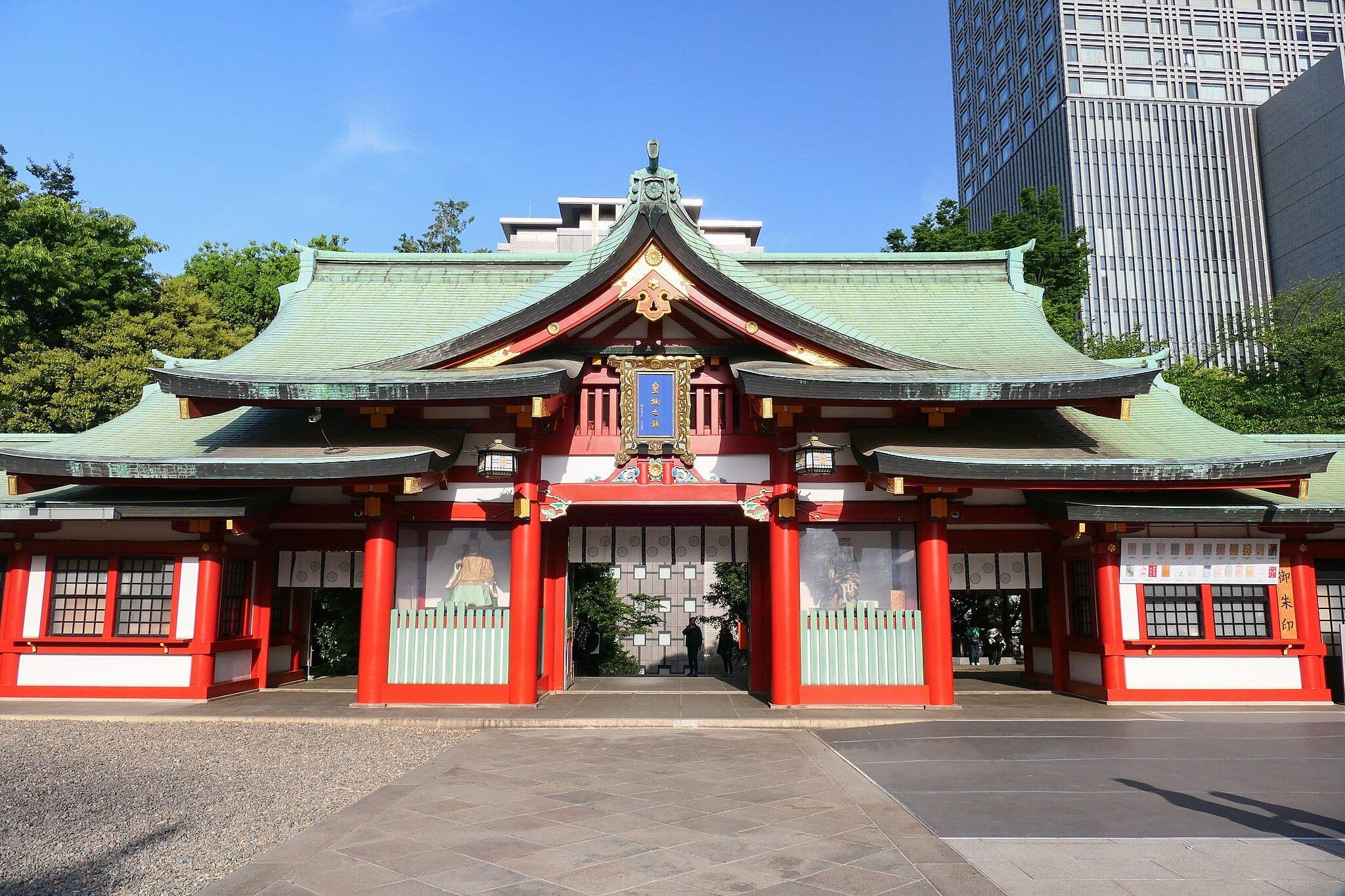
Hie Shrine
日枝神社- Kokkai-gijidō-mae StationMarunouchi LineChiyoda Line
- Walk 1 minutes
Hie Shrine, located in Tokyo's Nagatachō district, traces its origins back to the Kamakura period. Its roots were laid when the Edo clan enshrined the deity of Mount Hiei as the guardian of their domain. Later, in 1478, the warlord Ōta Dōkan brought the deity from Kawagoe to the grounds of Edo Castle, establishing the foundation of what would become Hie Shrine.
In 1590, Tokugawa Ieyasu entered Edo and adopted the shrine as the guardian deity of the Tokugawa family and protector of Edo City. As Edo Castle expanded, the shrine was relocated to Kōjimachi (modern-day Hayabusachō). Following a fire in 1657, it was moved to its current location in Nagatachō in 1659, overlooking the Tameike area. From this time onward, it came to be revered as the guardian shrine of the Imperial Palace (formerly Edo Castle).
Throughout the Edo period, Hie Shrine enjoyed unwavering patronage from the Tokugawa shoguns. It played an important role in state rituals, with official envoys sent during New Year and mid-year purification rites. Prayers were also conducted at the shrine during times of national significance, reflecting its deep integration into the political and spiritual life of the era.
Even after the Meiji Restoration and the relocation of the Imperial capital to Tokyo, Hie Shrine maintained its prominence. In 1868, as part of a broader separation of Shinto and Buddhism (shinbutsu bunri), the shrine’s syncretic title “Sannō Gongen” was officially changed to “Hie Shrine”. Nevertheless, it continues to be affectionately referred to as “Sannō-san” or simply “Oyama” by locals.
The shrine was elevated to Kanpei-chūsha (mid-ranked official shrine) in 1882 and later to Kanpei-taisha (top rank) in 1918, confirming its place among the most important government-supported shrines in the nation.
The original shrine buildings, constructed in the Gongen-zukuri architectural style during the early Edo period, were once designated National Treasures. However, they were destroyed in the Tokyo air raids of May 1945. Only the associated Sannō Inari Shrine survived the bombing. After the war, reconstruction efforts led by parishioners resulted in the current buildings, which were completed in stages from 1958 into the 1960s. In 1968, the shrine celebrated the 300th anniversary of its enshrinement at the current site.
In 1978, the 500th anniversary of the original enshrinement within Edo Castle was commemorated with major celebrations and restoration projects, including the publication of the Hie Shrine History, the construction of a new Treasure Hall (Hōmotsuden), and significant repairs to the shrine complex.
Enshrined Deities
- Ōyamakui-no-Kami – The primary deity of Hie Shrine, Ōyamakui-no-Kami is revered as a god of mountains, agriculture, and growth, as well as a protector of the land. He is also worshiped for blessings such as safe childbirth, warding off evil, matchmaking, and business prosperity.
According to the Kojiki, Ōyamakui-no-Kami resides on Mount Hiei in Ōmi Province (modern-day Shiga Prefecture) and is also venerated in Matsuo, located in the ancient Katsuno District of Kyoto.
Importantly, Ōyamakui-no-Kami is the original Shinto deity of Mount Hiei, and the name Sannō (“Mountain King”) is a syncretic Buddhist title used to refer to this same deity, especially in contexts influenced by Tendai Buddhism. This syncretism is most notably seen at Hie Shrine in Tokyo and Hiyoshi Taisha in Shiga Prefecture, both of which represent the merging of Shinto and Buddhist traditions.
- Kuninotokotachi-no-Kami
- Izanami-no-Kami
- Tarashinakatsuhiko-no-Mikoto (also known as Emperor Chūai)
Treasure Hall (Hōmotsuden)
The Treasure Hall was built in 1979 as part of the shrine’s 500th anniversary commemorations. It houses a remarkable collection of 31 swords, including National Treasures and Important Cultural Properties, alongside numerous sacred items once belonging to the Tokugawa shogunate.
Ceiling Paintings of the Worship Hall
To commemorate 50 years since the shrine's postwar reconstruction, a magnificent ceiling painting project was completed in June 2008. Supervised by Professor Ryōhei Miyata of Tokyo University of the Arts, 123 ceiling panels were installed in the main worship hall. These vibrant images depict birds, insects, and a hundred types of flowering plants once found in ancient Edo and the Musashino plains. Natural mineral pigments such as malachite green, orpiment, vermilion, ultramarine, and others were used, reflecting traditional Japanese artistic techniques.
Related topics
At Hey Japan!, we strive to keep the places listed on our website as current as possible. However, it is important to note that location owners or management may make changes to their plans, including canceling events, altering opening times, or modifying admission requirements, without prior notice. To ensure that you have the most accurate information, we recommend checking official websites before visiting any location.
Last Updated:














